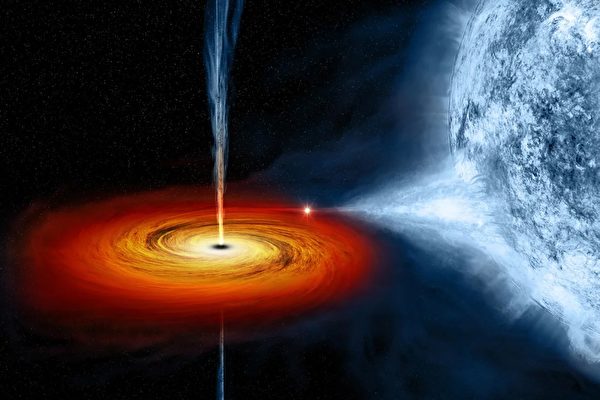Albert Einstein predicted in his theory of gravity that there is a region at the edge of a black hole where matter can no longer stay in orbit, but instead plunges into it. A study has now shown that Einstein was indeed correct.
A group of astronomers used a telescope capable of detecting X-rays to observe for the first time this region called the “plunging region” in a black hole approximately 10,000 light-years away from Earth. The research report was published on Thursday, May 16, in the Monthly Notices of the Royal Astronomical Society, with Andrew Mummery, a researcher at the Department of Physics at the University of Oxford in the UK, as the lead author of the report. He mentioned, “We have been ignoring this region because we didn’t have data. But now we know, we cannot explain it any other way.”
This is not the first time that black holes have helped confirm Einstein’s general theory of relativity. The first image of a black hole captured in 2019 strengthened Einstein’s core assumption that gravity merely curves the fabric of space-time due to matter.
Over the years, many other predictions made by Einstein have been proven correct, including gravitational waves and the universal speed limit.
According to CNN, Christopher Reynolds, an astronomy professor at the University of Maryland, College Park, emphasized that finding tangible evidence of the “plunging region” is a significant step that will allow scientists to significantly refine models of the behavior of matter around black holes. He mentioned that it could be used to measure the rotation speed of black holes.
The observed black hole is located in a system called MAXI J1820+070, consisting of a star smaller than the Sun and a black hole estimated to have a mass of 7 to 8 times that of the Sun. Astronomers used data collected by NASA’s space-based NuSTAR and NICER telescopes to understand how the plasma gas, known as a plasma, is being sucked into the black hole from the star.
NuSTAR stands for Nuclear Spectroscopic Telescope Array orbiting Earth, while NICER, or Neutron star Interior Composition Explorer, is stationed on the International Space Station.
“Magnetic forces keep most of the [disk of material around the black hole] stable and flow like a river, and the ‘plunging region’ is like the edge of a waterfall where all support collapses, and you just fall over,” Mummery explained. He added that while the “river” has been widely observed, evidence of the “waterfall” is a first-time discovery.
In the “plunging region,” light can still escape, but matter is heavily influenced by strong gravity. The findings of this study can help astronomers better understand the formation and evolution of black holes. Mummery stated, “By studying this region, we can truly understand them because it’s right on the edge, so it provides us with the most information.”

